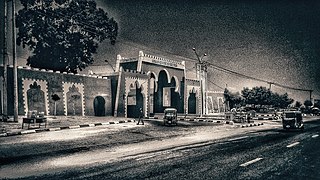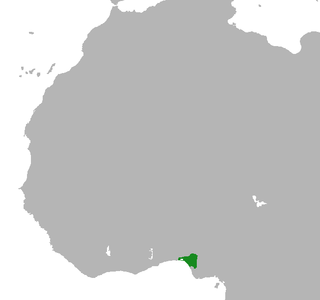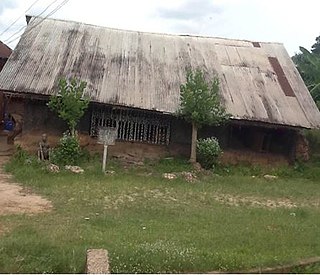 W
WThe Ancient Kano City Walls were ancient defensive walls built to protect the inhabitants of the ancient city of Kano. The wall was initially built from 1095 through 1134 and completed in the middle of the 14th century. The Ancient Kano City Walls were described as "the most impressive monument in West Africa".
 W
WFreedom Park is a memorial and leisure park area in the middle of downtown Lagos in Lagos Island, Nigeria which was formerly Her Majesty's Broad Street Prison. It was designed by the Architect Theo Lawson.
 W
WThe Gobarau Minaret is a 15-metre (50 ft) minaret located in the center of the city of Katsina, Northern Nigeria. As an early example of Muslim architecture in a city known as a theological center, the tower has become a symbol of the city.
 W
WIga Idunganran is the Official Residence of the Oba of Lagos, situated on Lagos Island. It is also a tourist attraction.
 W
WIlojo Bar, also called Olaiya House or Casa da Fernandez, was a Brazilian-styled historic building located near Tinubu Square in Lagos Island, Lagos State, Nigeria. It was originally built as a bar and restaurant in 1855 by the Fernandez family who employed returning ex-slaves who had mastered the art of building while in South America. Ilojo Bar was subsequently sold to Alfred Omolana Olaiya of the Olaiya family in 1933 and was declared a national monument in 1956 by the National Commission for Museums and Monuments.
 W
WThe Jaekel House is a 2-storey colonial mansion in Ebute Metta, Lagos, Nigeria. The house was built in 1898 on a large expanse of landscaped land and named after the late Francis Jaekel OBE, a former superintendent of the Nigerian Railway Corporation who retired in the 1970s after almost three decades of active service. Jaekel House was formally the residence of the General Manager and was later converted to a senior staff rest house. The building has been renovated and restored by Professor John Godwin in collaboration with the Railway Corporation in 2010. The building is now a “mini Museum” showcasing photographic archives dating from 1940s through to 1970s of personalities, places, historical events in pre- and post-independent Nigeria and houses artefacts of the old Railway Corporation. It's also one of the fairy tale wedding locations in Lagos.
 W
WThe Kingdom of Benin, was a kingdom in West Africa in what is now southern Nigeria. It is not to be confused with Benin, the modern-day nation-state. The Kingdom of Benin's capital was Edo, now known as Benin City in Edo state. The Benin Kingdom was "one of the oldest and most highly developed states in the coastal hinterland of West Africa". It was formed around the 11th century AD", and lasted until it was annexed by the British Empire in 1897.
 W
WThe Okoroji House Museum or Okoroji House,, is a historic house and museum located in Ujari, a village in Arochukwu, Abia State, Eastern Nigeria. The house was declared a national monument in 1972 by the National Commission for Museums and Monuments.
 W
WSungbo's Eredo is a system of defensive walls and ditches that is located to the southwest of the Yoruba town of Ijebu Ode in Ogun State, southwest Nigeria. It was built in 800-1000 AD in honour of the Ijebu noblewoman Oloye Bilikisu Sungbo. The location is on Nigeria's tentative list of potential UNESCO World Heritage Sites.
 W
WThe Walls of Benin are a series of earthworks made up of banks and ditches, called Iya in the Edo language, in the area around present-day Benin City, the capital of present-day Edo, Nigeria. They consist of 15 km (9.3 mi) of city iya and an estimated 16,000 kilometres of rural iya in the area around Benin. The 'walls' of Benin City and surrounding areas were described as "the world's largest earthworks carried out prior to the mechanical era" by the Guinness book of Records. Some estimates suggest that the walls of Benin may have been constructed between the thirteenth and mid-fifteenth century CE and others suggest that the walls of Benin may have been constructed during the first millennium CE.